
Indoor Succulents: Soft-Leaved Varieties Available?
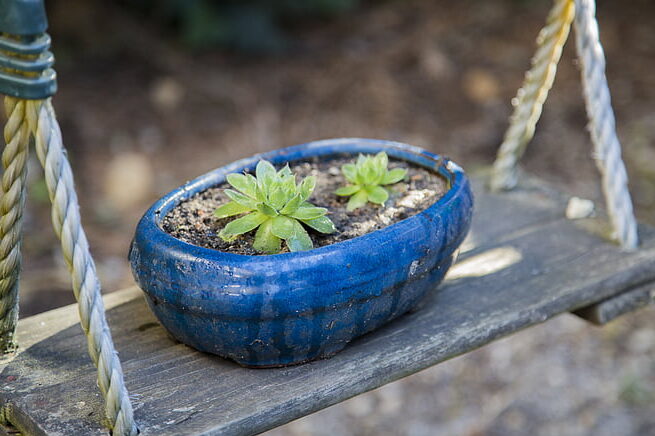
Indoor gardening has become increasingly popular in recent years, with more and more people looking to bring a touch of greenery into their homes. One type of plant that has gained a lot of attention in the indoor gardening world is succulents. These hardy plants are known for their ability to thrive in dry conditions, making them a perfect choice for those who may not have a green thumb or who live in areas with limited access to natural sunlight.
We will explore the world of indoor succulents, focusing specifically on the soft-leaved varieties that are available. While most succulents are known for their thick, fleshy leaves, there are also some species that have softer, more delicate foliage. We will discuss the characteristics of these soft-leaved succulents, including their care requirements and the best ways to incorporate them into your indoor garden. Whether you are a seasoned succulent enthusiast or just starting out, this article will provide you with valuable information on how to successfully grow and enjoy soft-leaved succulents indoors.
- Yes, there are soft-leaved succulent varieties that can be grown indoors
- Some examples of soft-leaved indoor succulents include Echeveria and Haworthia
- Soft-leaved succulents are often more tolerant of indoor conditions, such as lower light levels and drier air
- These succulents are generally easier to care for indoors compared to their hard-leaved counterparts
- Soft-leaved succulents can add a unique texture and appearance to indoor plant displays
- When choosing soft-leaved succulents for indoor use, consider their specific light and water requirements
- Remember to provide well-draining soil and pots with drainage holes for indoor succulents
- With proper care, soft-leaved succulents can thrive in indoor environments and make excellent houseplants
- Frequently Asked Questions
Yes, there are soft-leaved succulent varieties that can be grown indoors
When it comes to growing succulents indoors, most people think of the traditional, hard-leaved varieties. However, there are also soft-leaved succulent varieties that can thrive indoors with the right care and conditions.
Soft-leaved succulents are known for their plump, fleshy leaves that give them a unique and more delicate appearance compared to their hard-leaved counterparts. These softer leaves often have a velvety texture and can come in a range of colors, from vibrant greens to pastel pinks and purples.
Advantages of Growing Soft-Leaved Succulents Indoors
- Aesthetically pleasing: Soft-leaved succulents add an interesting texture and visual appeal to any indoor space. Their varied colors and velvety leaves can create a lush and inviting atmosphere.
- Less prone to damage: While soft-leaved succulents may seem more delicate, they are actually more resistant to damage caused by handling or accidental bumps. Their leaves are more flexible and less likely to break.
- More forgiving: Soft-leaved succulents are generally more forgiving when it comes to indoor conditions. They can tolerate slightly lower light levels and are less susceptible to drying out quickly.
Popular Soft-Leaved Succulent Varieties for Indoor Gardening
- Kalanchoe Tomentosa (Panda Plant): This succulent has fuzzy, silvery-green leaves with brown spots. It thrives in bright, indirect light and is known for its ability to tolerate lower humidity levels.
- Echeveria 'Lola': With its stunning rosette of pastel pink and lilac leaves, 'Lola' is a popular choice for indoor gardens. It prefers bright light and well-draining soil.
- Pachyphytum oviferum (Moonstones): This succulent features chubby, powdery blue-gray leaves that resemble little moonstones. It prefers bright light and infrequent watering.
- Sedum morganianum (Burro's Tail): With its trailing stems covered in plump, blue-green leaves, this succulent is perfect for hanging baskets. It thrives in bright, indirect light and well-draining soil.
These are just a few examples of soft-leaved succulent varieties that can be successfully grown indoors. Remember to provide them with the right amount of light, well-draining soil, and occasional watering to keep them happy and thriving in your indoor garden.
Some examples of soft-leaved indoor succulents include Echeveria and Haworthia
When it comes to indoor succulents, most people think of the classic hard-leaved varieties like Aloe vera and Jade plants. However, there are also soft-leaved succulents that can thrive indoors. Two popular examples of soft-leaved indoor succulents are Echeveria and Haworthia.
 Exploring the Unique World of Blue Succulent Plants: Are They Real?
Exploring the Unique World of Blue Succulent Plants: Are They Real?Echeveria
Echeveria is a genus of succulent plants that are known for their rosette-shaped leaves and vibrant colors. They come in various sizes, from small rosettes to larger, more architectural forms. Echeverias are native to Mexico and Central America, and they have become increasingly popular as indoor plants due to their ability to adapt to different light conditions.
One of the reasons why Echeverias are great indoor succulents is their soft leaves, which make them less prone to damage compared to their hard-leaved counterparts. Their leaves are often fleshy and pliable, giving them a more delicate appearance. Some popular Echeveria varieties for indoor cultivation include Echeveria 'Lola', Echeveria 'Perle von Nürnberg', and Echeveria 'Black Prince'.
Haworthia
Haworthia is another genus of succulents that are well-suited for indoor environments. They are native to Southern Africa and have a distinctive appearance with their clustered, rosette-like leaves. Haworthias are known for their tolerance to low light conditions, making them ideal for indoor settings.
What sets Haworthias apart from other succulents is their soft, translucent leaves. The leaves are typically smaller and have a smoother texture compared to Echeverias. Haworthias come in different varieties, such as Haworthia fasciata, Haworthia cooperi, and Haworthia attenuata, each with its own unique leaf patterns and colors.
Overall, if you're looking to add a touch of softness to your indoor succulent collection, consider incorporating Echeverias and Haworthias. Their soft leaves not only provide visual interest but also make them more forgiving when it comes to handling and care.
Soft-leaved succulents are often more tolerant of indoor conditions, such as lower light levels and drier air
When it comes to indoor succulents, many people think of the classic varieties with thick, fleshy leaves. However, there are also soft-leaved succulents that can thrive indoors. These soft-leaved varieties are often more tolerant of indoor conditions, such as lower light levels and drier air.
Soft-leaved succulents have a different texture compared to their thick-leaved counterparts. Their leaves are typically thinner and more delicate, giving them a softer appearance. Despite their delicate nature, these succulents are still known for their ability to store water, making them well-suited for drier indoor environments.
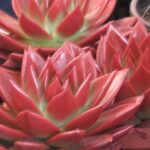 Uncover Profitable Succulent Varieties for Lucrative Returns
Uncover Profitable Succulent Varieties for Lucrative ReturnsPopular Soft-Leaved Succulents for Indoor Gardening
If you're looking to add some soft-leaved succulents to your indoor garden, here are a few popular varieties to consider:
- Haworthia: Haworthia plants have slim, pointed leaves that form rosettes. They come in various patterns and colors, making them a visually appealing addition to any indoor space.
- Gasteria: Gasteria succulents have thick, triangular leaves with distinctive patterns and textures. They are known for their resilience and ability to tolerate low light conditions.
- Kalanchoe: Kalanchoe plants are known for their colorful flowers, but they also have soft, fleshy leaves. They are relatively easy to care for and can tolerate a wide range of indoor conditions.
- Sedum: Sedum succulents come in various shapes and sizes, but many soft-leaved varieties are perfect for indoor gardening. They have plump, rounded leaves that give them a unique and charming appearance.
Remember, even though these soft-leaved succulents are more tolerant of indoor conditions, they still require some care. It's essential to provide them with adequate light, well-draining soil, and regular watering. Additionally, make sure to monitor the humidity levels in your indoor environment to ensure the best growing conditions for your soft-leaved succulents.
So, if you're looking to diversify your indoor succulent collection, don't overlook the soft-leaved varieties. They not only add a different texture to your indoor garden but also offer a greater range of options for successfully growing succulents indoors.
These succulents are generally easier to care for indoors compared to their hard-leaved counterparts
When it comes to indoor gardening, succulents have become a popular choice among plant enthusiasts. Their ability to thrive in dry and arid conditions, coupled with their unique and eye-catching appearance, makes them a perfect addition to any indoor space. While most people are familiar with the classic hard-leaved succulents like the Jade Plant or Aloe Vera, there is a lesser-known category of succulents – the soft-leaved varieties.
What are soft-leaved succulents?
Soft-leaved succulents, as the name suggests, have leaves that are more pliable and flexible compared to their hard-leaved counterparts. They often have a more delicate and tender appearance, which adds a touch of elegance to any indoor space. These soft-leaved succulents come in a wide range of shapes, sizes, and colors, making them a versatile choice for indoor gardening.
Advantages of soft-leaved succulents indoors
Soft-leaved succulents are generally easier to care for indoors compared to their hard-leaved counterparts. Their pliable leaves allow them to adapt more easily to indoor conditions, such as lower humidity levels. They are also less prone to damage from accidental bumps or knocks, making them a great choice for households with children or pets.
Furthermore, soft-leaved succulents often have a higher tolerance for lower light levels, making them ideal for indoor spaces with limited natural light. They can thrive in areas such as offices, bedrooms, or living rooms where direct sunlight may be scarce.
 Top Succulents for Thriving in Texas Climate: A Comprehensive Guide
Top Succulents for Thriving in Texas Climate: A Comprehensive GuidePopular soft-leaved succulent varieties
There are numerous soft-leaved succulent varieties available, each with its own unique characteristics. Here are a few popular choices:
- Kalanchoe tomentosa: Also known as "Panda Plant," this succulent has fuzzy, silver-green leaves with brownish-red markings.
- Echeveria elegans: Commonly referred to as "Mexican Snowball," this succulent features rosettes of pale green, powdery leaves.
- Haworthia fasciata: Known as "Zebra Plant," this succulent has thick, dark green leaves with white horizontal stripes.
- Senecio rowleyanus: Often called "String of Pearls," this succulent has trailing stems with spherical, bead-like leaves.
These are just a few examples, and there are many more soft-leaved succulent varieties to explore and choose from.
Caring for soft-leaved succulents indoors
To ensure the health and vitality of your soft-leaved succulents, it's important to provide them with the right care. Here are some general guidelines:
- Light: Soft-leaved succulents thrive in bright, indirect light. Place them near a window where they can receive a few hours of sunlight each day.
- Watering: Allow the soil to dry out completely between waterings. Overwatering can cause root rot and damage the succulent.
- Soil: Use a well-draining succulent or cactus soil mix to prevent waterlogged roots.
- Temperature: Soft-leaved succulents prefer temperatures between 60-75°F (15-24°C). Avoid exposing them to extreme cold or hot conditions.
- Fertilizer: Feed your soft-leaved succulents with a diluted succulent fertilizer once every month during the growing season.
By following these care tips, you can enjoy the beauty of soft-leaved succulents in your indoor space and create a thriving succulent collection.
Soft-leaved succulents can add a unique texture and appearance to indoor plant displays
Soft-leaved succulents, also known as tender succulents, are a popular choice for indoor plant enthusiasts due to their unique texture and appearance. Unlike their hard-leaved counterparts, soft-leaved succulents are characterized by their pliable leaves that have a more delicate and gentle touch.
These soft-leaved succulents come in a wide range of shapes, sizes, and colors, making them versatile additions to any indoor plant display. Whether you prefer the classic rosette shape or the trailing tendrils of a vine-like succulent, there is a soft-leaved variety that will suit your style and preference.
Benefits of Soft-Leaved Succulents
Soft-leaved succulents offer several advantages for indoor gardening:
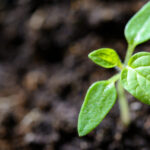 Discover the Most Popular Succulents: Names and Care Tips
Discover the Most Popular Succulents: Names and Care Tips- Touch-friendly: The pliable leaves of soft-leaved succulents make them ideal for households with children or pets. You won't have to worry about sharp edges or prickly spines.
- Unique texture: The soft and velvety texture of their leaves adds visual interest to your indoor plant collection, creating a wonderful contrast to other plants with harder or glossier foliage.
- Indoor adaptability: Many soft-leaved succulents thrive in indoor environments, making them a great choice for those who prefer to keep their plants inside.
- Low maintenance: Like other succulents, soft-leaved varieties are known for their ability to store water in their leaves, making them drought-tolerant and low maintenance. Perfect for busy plant lovers!
Popular Soft-Leaved Succulent Varieties
Here are a few examples of soft-leaved succulents that you can consider for your indoor plant collection:
- Echeveria: With their rosette-shaped leaves and stunning color variations, Echeverias are a favorite among succulent enthusiasts. They come in various sizes, from tiny rosettes to larger focal plants.
- Senecio radicans: Also known as String of Bananas, this trailing succulent features cascading vines with small, banana-shaped leaves. It adds a unique charm when placed in hanging baskets or displayed on shelves.
- Kalanchoe tomentosa: Commonly referred to as Panda Plant or Chocolate Soldier, this soft-leaved succulent has fuzzy leaves with brown spots, resembling the coloring of a panda.
When caring for soft-leaved succulents, it's important to provide them with well-draining soil, adequate sunlight, and appropriate watering. Remember to allow the soil to dry out between waterings to prevent root rot.
Soft-leaved succulents offer a delightful touch and visual appeal to indoor plant displays. Their unique texture, adaptability, and low maintenance make them an excellent choice for both novice and experienced plant lovers. Consider adding soft-leaved succulents to your indoor plant collection and enjoy the beauty they bring to your home.
When choosing soft-leaved succulents for indoor use, consider their specific light and water requirements
If you are looking to add some soft-leaved succulents to your indoor plant collection, it's important to consider their specific light and water requirements. While most succulents are known for their ability to thrive in dry conditions, soft-leaved varieties have slightly different needs.
Light requirements for soft-leaved succulents
Soft-leaved succulents generally prefer bright, indirect light. They can tolerate some direct sunlight, but too much can cause their leaves to burn or become discolored. Placing them near a window that receives filtered light or using a sheer curtain to diffuse the sunlight can provide them with the ideal lighting conditions.
It's crucial to monitor the light levels in your indoor space and adjust the placement of your soft-leaved succulents accordingly. If you notice that the leaves are stretching towards the light source or becoming pale, it may indicate that they are not receiving enough light.
Watering soft-leaved succulents
Soft-leaved succulents have more delicate leaves compared to their fleshy counterparts. As a result, they are more prone to rot if overwatered. It's essential to strike the right balance when it comes to watering these plants.
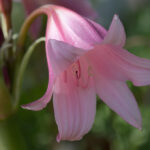 Discover the Stunning Succulents with Bell-Shaped Flowers
Discover the Stunning Succulents with Bell-Shaped FlowersAllow the soil to dry out between watering sessions, but make sure not to let it become completely bone-dry. A good way to check if it's time to water is by sticking your finger about an inch into the soil. If it feels dry at that depth, it's time to give your soft-leaved succulent a drink.
Remember, it's always better to underwater than to overwater soft-leaved succulents. Over time, you will get a sense of your plant's water needs and establish a watering routine that works best for them.
Popular soft-leaved succulent varieties for indoor use
Here are a few popular soft-leaved succulent varieties that can thrive indoors:
- Kalanchoe tomentosa - Also known as "Panda Plant," it features fuzzy leaves with brown spots.
- Echeveria elegans - This rosette-shaped succulent has powdery blue-green leaves.
- Crassula ovata - Commonly known as "Jade Plant," it has smooth, oval-shaped leaves and can grow into a small tree.
- Haworthia fasciata - Often called "Zebra Plant," it has distinctive white stripes on its dark green leaves.
These soft-leaved succulents not only add a unique texture to your indoor garden but also require less maintenance compared to other houseplants.
With proper care and attention to their specific needs, soft-leaved succulents can thrive indoors and bring a touch of natural beauty to your living space. So go ahead, explore these varieties, and create a cozy succulent oasis in your home!
Remember to provide well-draining soil and pots with drainage holes for indoor succulents
When it comes to growing indoor succulents, one of the most important factors to consider is the type of soil and pots you use. Succulents thrive in well-draining soil that allows excess water to flow out easily. This helps prevent root rot and keeps your succulents healthy and happy.
Additionally, it's crucial to choose pots that have drainage holes at the bottom. These holes allow water to escape, preventing water accumulation at the roots of your succulents. Without proper drainage, succulents can become waterlogged, leading to various issues such as root rot and fungal diseases.
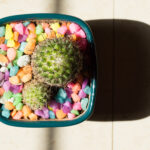 Discover the Diverse Varieties of Succulent Plants Available
Discover the Diverse Varieties of Succulent Plants AvailableSoft-Leaved Succulents: A Unique Option for Indoor Gardening
While many people associate succulents with thick, fleshy leaves, there are also soft-leaved varieties that can thrive indoors. These soft-leaved succulents have a more delicate appearance and often require slightly different care compared to their hard-leaved counterparts.
Soft-leaved succulents, such as Echeveria and Kalanchoe, have thinner leaves that may be more prone to sunburn or damage from extreme temperatures. Therefore, it's essential to provide them with the right amount of sunlight and temperature conditions. Generally, soft-leaved succulents prefer bright, indirect light and temperatures between 60°F and 75°F (15°C and 24°C).
When it comes to watering soft-leaved succulents, it's important to strike the right balance. These varieties tend to need slightly more water compared to hard-leaved succulents. However, overwatering can still be detrimental, so it's crucial to allow the soil to dry out between waterings. Testing the soil moisture with your finger or using a moisture meter can help you determine when it's time to water your soft-leaved succulents.
Choosing the Right Soft-Leaved Succulents for Indoor Gardening
If you're considering growing soft-leaved succulents indoors, there are several popular varieties to choose from. Here are a few options:
- Echeveria: Echeveria is a popular soft-leaved succulent known for its rosette-shaped foliage and vibrant colors. It comes in various shapes, sizes, and colors, making it a versatile choice for indoor gardening.
- Kalanchoe: Kalanchoe is another soft-leaved succulent that produces clusters of colorful flowers. It's relatively easy to care for and can add a pop of color to your indoor space.
- Sedum: Sedum, also known as stonecrop, is a diverse genus of succulent plants. Many sedum varieties have soft leaves and are well-suited for indoor gardening.
These are just a few examples of soft-leaved succulents that can thrive indoors. Remember to research the specific care requirements of the varieties you choose and provide them with the appropriate growing conditions.
When it comes to indoor succulents, it's essential to provide well-draining soil and pots with drainage holes. Soft-leaved succulents offer a unique option for indoor gardening, and with proper care and attention, they can thrive in your home. Consider adding some soft-leaved succulents to your indoor plant collection and enjoy their beauty and charm.
With proper care, soft-leaved succulents can thrive in indoor environments and make excellent houseplants
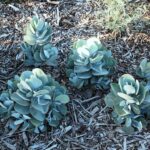 Discover Native African Succulents: Diverse & Hardy Garden Species!
Discover Native African Succulents: Diverse & Hardy Garden Species!Succulents are known for their ability to store water in their leaves, making them incredibly resilient and low-maintenance plants. While most people associate succulents with thick, fleshy leaves, there are also soft-leaved varieties that can thrive in indoor environments. These soft-leaved succulents offer a unique and delicate beauty that can add a touch of elegance to any room.
Why choose soft-leaved succulents for indoors?
Soft-leaved succulents have a distinctive appearance that sets them apart from their more common counterparts. Their leaves are thinner and more delicate, often showcasing intricate patterns and textures. These characteristics make them perfect for indoor settings, where they can be admired up close and add a touch of sophistication to any space.
Additionally, soft-leaved succulents are typically more tolerant of lower light levels compared to their thick-leaved counterparts. This means that they can thrive in indoor environments where natural sunlight may be limited. With the right care and attention, soft-leaved succulents can remain healthy and vibrant, even in areas with less-than-ideal lighting conditions.
Popular soft-leaved succulent varieties for indoor gardening
If you're considering incorporating soft-leaved succulents into your indoor plant collection, here are a few popular varieties to consider:
- Echeveria elegans: Also known as Mexican snowball, this soft-leaved succulent features rosettes of pale green leaves with a velvety texture. It adds a touch of elegance to any indoor space.
- Kalanchoe tomentosa: Commonly known as panda plant, this soft-leaved succulent has fuzzy, silver-green leaves that give it a unique and charming appearance.
- Sedum morganianum: Also called burro's tail or donkey's tail, this soft-leaved succulent has trailing stems adorned with plump, blue-green leaves that resemble beads. It looks stunning when placed in hanging baskets.
These are just a few examples of the wide range of soft-leaved succulents available for indoor gardening. Each variety has its own unique characteristics and care requirements, so be sure to research and understand the specific needs of the succulents you choose.
Tips for caring for soft-leaved succulents indoors
While soft-leaved succulents are generally more forgiving in lower light conditions, they still require proper care to thrive indoors. Here are a few tips to help you keep your soft-leaved succulents happy and healthy:
- Provide adequate lighting: Place your succulents near a bright window or provide them with supplemental grow lights to ensure they receive enough light to sustain growth.
- Water sparingly: Soft-leaved succulents still have the ability to retain water, so it's important not to overwater them. Allow the soil to dry out between waterings and ensure good drainage to prevent root rot.
- Monitor humidity levels: Soft-leaved succulents are generally more sensitive to high humidity. If you live in a humid climate, consider using a dehumidifier or providing adequate air circulation to prevent fungal issues.
- Use well-draining soil: Plant your soft-leaved succulents in a well-draining soil mix specifically formulated for succulents. This will prevent waterlogged roots and promote healthy growth.
- Protect from extreme temperatures: Soft-leaved succulents are typically more sensitive to extreme temperatures. Keep them away from drafts and protect them from both freezing and scorching temperatures.
By following these care tips and selecting the right soft-leaved succulents for your indoor space, you can create a stunning display of plants that thrive and bring beauty to your home.
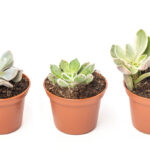 Low-Maintenance Succulents: Finding the Least Demanding Varieties
Low-Maintenance Succulents: Finding the Least Demanding VarietiesFrequently Asked Questions
1. Can I find soft-leaved succulent varieties suitable for indoor growth?
Yes, there are several soft-leaved succulent varieties that can thrive indoors, such as Haworthia, Echeveria, and Kalanchoe.
2. Do soft-leaved succulents require different care compared to other succulent types?
Soft-leaved succulents generally have similar care requirements to other succulent varieties. They need well-draining soil, plenty of sunlight, and infrequent watering.
3. Are soft-leaved succulents suitable for beginners?
Yes, soft-leaved succulents can be a good choice for beginners because they are generally more forgiving and adaptable to different environments compared to other succulent types.
4. Can soft-leaved succulents be propagated easily?
Yes, soft-leaved succulents are often easy to propagate through methods such as leaf or stem cuttings, making them a popular choice for succulent enthusiasts.
If you want to read more articles similar to Indoor Succulents: Soft-Leaved Varieties Available?, you can visit the Varieties and Colors category.

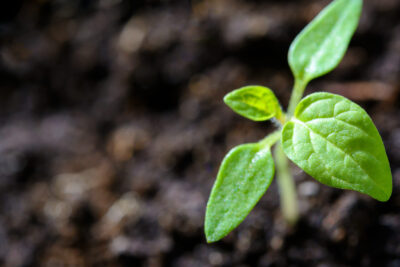
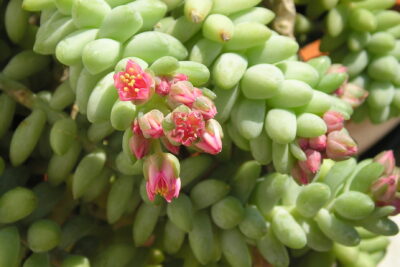


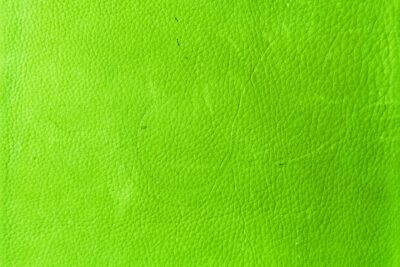
You Must Read